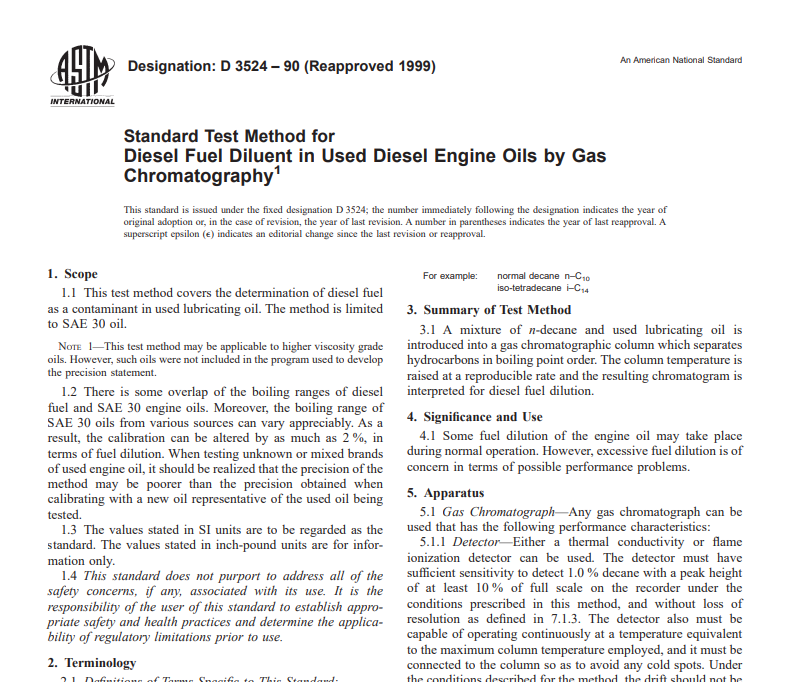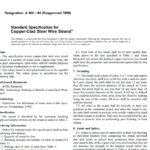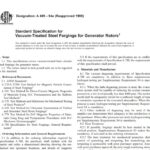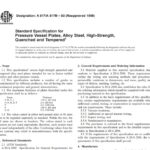Standard Test Method for
Diesel Fuel Diluent in Used Diesel Engine Oils by Gas
Chromatography1
This standard is issued under the fixed designation D 3524; the number immediately following the designation indicates the year of
original adoption or, in the case of revision, the year of the last revision. A number in parentheses indicates the year of last reapproval. A
superscript epsilon (e) indicates an editorial change since the last revision or reapproval.
1. Scope
1.1 This test method covers the determination of diesel fuel
as a contaminant in used lubricating oil. The method is limited
to SAE 30 oil.
NOTE 1—This test method may be applicable to higher viscosity grade
oils. However, such oils were not included in the program used to develop
the precision statement.
1.2 There is some overlap in the boiling ranges of diesel
fuel and SAE 30 engine oils. Moreover, the boiling range of
SAE 30 oils from various sources can vary appreciably. As a
result, the calibration can be altered by as much as 2 %, in
terms of fuel dilution. When testing unknown or mixed brands
of used engine oil, it should be realized that the precision of the
method may be poorer than the precision obtained when
calibrating with a new oil representative of the used oil being
tested.
1.3 The values stated in SI units are to be regarded as the
standard. The values stated in inch-pound units are for information only.
1.4 This standard does not purport to address all of the
safety concerns, if any, associated with its use. It is the
responsibility of the user of this standard to establish appropriate safety and health practices and determine the applicability of regulatory limitations prior to use.
2. Terminology
2.1 Definitions of Terms Specific to This Standard:
2.1.1 fuel dilution—the amount, expressed as a percentage,
of engine fuel found in engine lubricating oil. This may be the
result of engine wear or improper performance.
2.2 Abbreviations:
2.2.1 A common abbreviation of hydrocarbon compounds is
to designate the number of carbon atoms in the compound. A
prefix is used to indicate the carbon chain form, while a
subscripted suffix denotes the number of carbon atoms.

Click below to download Astm D 3524 – 90 (Reapproved 1999) pdf free
Click here to download Astm D 3523 – 92 (Reapproved 2002) Pdf Free Download






